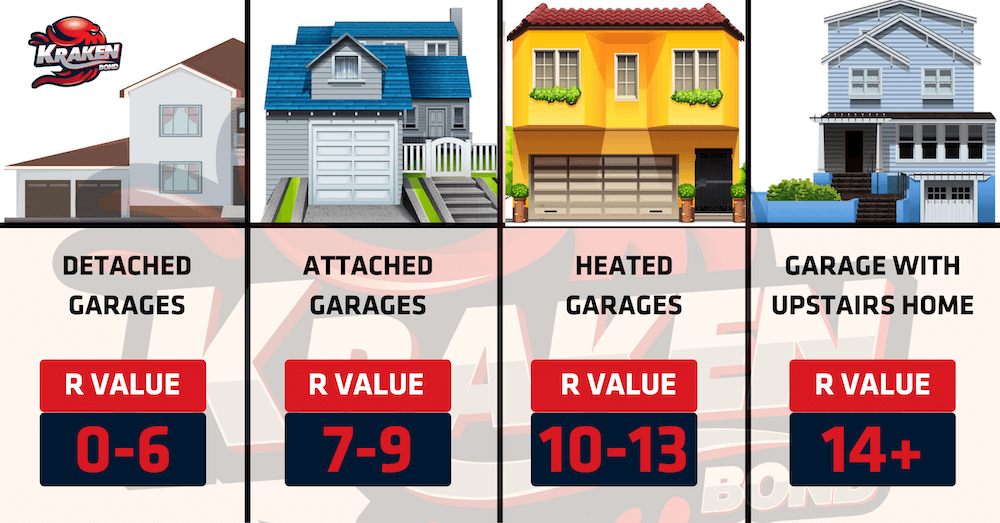How to Choose: Closed-Cell vs. Open-Cell Insulation Foam
If you have decided to insulate your house and are looking for the right insulation for your needs, you may have stumbled upon spray foam insulation, one of the most popular forms of insulation today.
Spray foam insulation comes in two forms: open-cell and closed-cell insulation foam. To determine which one can meet your needs, read the article and find out how they are different from each other.
What is the Difference Between Open-Cell and Closed-Cell Insulation?
Spray foam is a chemical substance formed when two chemicals, isocyanate, and polyol resin, are mixed, and a chemical reaction emerges. Although it is sprayed out as a liquid, it forms a semi-solid expanding foam. Spray foam insulation is the type of insulation that makes use of this expansion as an alternative to traditional ways of insulation. It is especially good at filling in gaps, cracks, or cavities to prevent undesired airflow.
There are two types of spray foam insulation: open-cell and closed-cell. Open-cell spray foam insulation is lighter and more absorbent, whereas closed-cell polyurethane foam is denser and consists of closed holes formed during the expansion.
Open-cell and closed-cell insulation foam can be compared in many ways. See the table below.
|
Open-Cell Insulation Foam |
Closed-Cell Insulation Foam |
|
|
Structure |
|
|
|
Moisture |
|
|
|
Sound |
|
|
|
R-Value |
|
|
|
Cost |
|
|
What is Closed-Cell Insulation Foam Used For?
With its high R-value and rigid form, closed-cell insulation foam is suitable for insulating buildings in areas with extreme temperatures.
Advantages of Closed-Cell Insulation Foam
Since closed-cell insulation foam has a higher R-value when compared to open-cell spray foam and many other types of insulation such as fiberglass or cellulose, it is a superior thermal insulator. Also, it is resistant to water and moisture. It is recommended for buildings in flood-risk areas. Besides providing perfect insulation for your house, it also strengthens the structure of the building with its rigid and strong form.
What is Open-Cell Spray Foam Used For?
Open-cell spray foam expands much more rapidly than closed-cell insulation foam; therefore, it is preferred to insulate larger surfaces more.
Advantages of Open-Cell Spray Foam
Open-cell spray foam can expand up to 100 times its liquid form after it is sprayed out, so it can easily cover the entire surface you want to insulate, filling even the tiny gaps or cracks.
Thanks to its cellular structure, open-cell foam absorbs sound better. It is a perfect choice to avoid noise pollution.
Open-cell foam lets moisture travel through instead of keeping it in. It prevents condensation and mold growth. It is a cheaper way of insulation than closed-cell insulation foam.
Furthermore, it is more eco-friendly when compared to other types of insulation materials with more waste materials.

What Type of Spray Foam is Best?
You can prefer either closed-cell or open-cell spray foam for various reasons. They both insulate; however, there are many differences between their forms or uses. Thus, it is not easy to tell what type of spray foam is the best. It all depends on your needs and preferences.
Open-Cell vs Closed-Cell Insulation R-Value
The R-value level is the most important indicator showing how well an insulation material can resist the conductive heat flow. The denser the insulation material, the higher the R-value is. Therefore, closed-cell insulation foam, denser than open-cell spray foam and other types of conventional insulation materials, has the highest R-value. Its R-value range is from 5.6 to 8. On the other hand, open-cell spray foam is lighter and has a cellular structure. It has an R-value of about 3.5 per inch.
Open-Cell vs Closed-Cell Insulation Cost
Open-cell foam is more affordable than closed-cell. It expands faster and a lot more in comparison to closed-cell. Therefore, it takes less open-cell foam to cover the area you want to insulate, which means a lower cost at the end of the day.
On the other hand, the closed-cell foam expands less than open-cell foam, and you need much more foam to insulate a designated area entirely. Therefore, closed-cell spray foam costs will be higher.
Which Insulation Should I Use?
Since both types have different features suitable for different goals, you should know what result you expect to decide which type is the best for you. If you live in an area with extreme temperatures and want to insulate large areas to improve the energy efficiency of your house, you’d better choose closed-cell foam.
On the other hand, if you are living in a place with a milder climate or willing to fill in the gaps or cracks in your house, open-cell insulation is an ideal option with its rapidly expanding and flexible form.
Beyond these, your budget is an important factor when choosing the best insulation for your house. Open-cell foam is more suitable for you if you are looking for a more affordable option. If you have allocated more money for the insulation process, you can choose to have closed-cell foam.
Conclusion
Open-cell or closed-cell insulation foam is different from each other in many ways. Now, it is time to think about which one you need for your specific project. Happy renovating!
1 comment
Author : Krakenbond Team

















Which spray foam is best to use to prevent pest entry (mice, roaches, bees) from entering my townhouse if my neighbors have pests? I hear spray foam can do this even if the next townhouse is vacant. Baltimore, Maryland thanks you for your reply.
Leave a comment